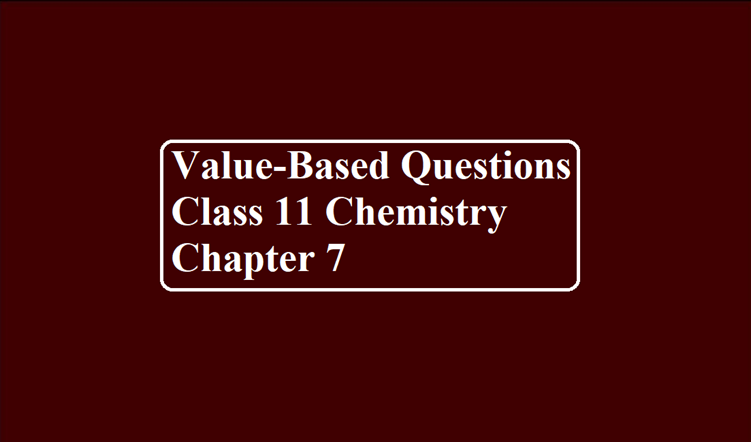Value-Based Questions Class 11 Chemistry Chapter 7
According to Arrhenius’s theory, acids are substances that dissociate in water to give hydrogen ions H+ (aq) and bases are substances that produce hydroxyl ions OH – (aq). The ionization of an acid HX (aq) can be represented by the following equations:
HX (aq) → H+ (aq) + X– (aq) or HX(aq) + H2O(l) → H3O + (aq) + X – (aq)
Similarly, a base molecule like MOH ionizes in an aqueous solution according to the equation:
MOH(aq) → M+ (aq) + OH– (aq)
Bronsted acids are proton donors whereas Bronsted bases are proton acceptors. Acids on donating proton or conjugate bases whereas bases form conjugate acids after accepting a proton. The buffer solution is a solution whose pH does not change. By adding a small amount of H+ or OH–. The decrease in the concentration of the ion by adding other ions as the common ions are called the common ion effect. Ksp (solubility product) is the product of molar concentrations of ions raised to power the number of ions per formula of ions of the compound in sparingly soluble salt.
Precipitation occurs only if the ionic product exceeds the solubility product. The solubility of salt decreases in presence of a common ion. Kw the ionic product of water is 1×10-14 at 298 k. Kw increases with an increase in temperature. pH is – log[H3O+] where [H3O+] = cα in monoprotic acid, is molar conc., α is degree of ionisation.
(a) What will be the conjugate base of
(i) H2SO4 (ii) HCO3–?
Ans. (i). HSO4– (ii) CO32-
(b) What will be the conjugate acid of
(i) NH2– (ii) NH3?
Ans. (i) NH3 (ii) NH4+
(c) The conc. of H3O+ is 4 × 10-4 find its pH
Ans. We know
pH = − log[H3O+]
Since we are given the hydronium ion (H3O+) concentration of the solution, we can put this value into the formula.
pH = − log [4 × 10−4 M]
= – log 4 + 4 log 10 (Using formula log (mn) = log m – log n)
pH = 0.6020 + 4 = 4.6020
Value-Based Questions Class 11 Chemistry Chapter 7



